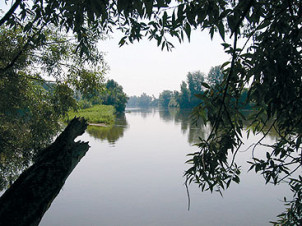
By Diana Vela Almeida
Large scale gold mining, more than any other economic activity; provokes the greatest number of negative impacts relative to its scale of operation. Gold mining damages local communities, destroys livelihoods, and changes existing socio-cultural structures. It also causes degradation of landscape, soil erosion, deforestation and vast contamination of water resources. The protection of water resources has become the core argument against the gold mineral industry. The problem cannot be overstated, the Environmental Protection Agency of the United States estimates that in 2008 the mining industry emitted 80% of the arsenic and 89% of the mercury in the US that contaminates water mainly though leakage or spillage of overflowing ponds or tailing storages. Environmental damages are extensive; for example, in Baia Mare, Romania, 100 000 cubic meters of wastewater containing up to 122 tons of cyanide were discharged into the Tisza River with contamination reaching the Danube River. The disaster occurred in 2000 and water contamination is still affecting crops, wildlife and threatening the health of people in the area.
These negative impacts are certainly severe; however, the environmental debate over mineral extraction has centered primarily on the water footprint and not as much on the virtual water used for the production of gold. The concept of virtual water was coined in 1993 by Professor John Anthony Allan to criticize the amount of water used to produce and export citrus fruits from the Middle East to the European Union. He argued that water-scarce regions export large hidden flows of water by producing and selling fruits or livestock. For instance, considering climatic conditions and agricultural practices, on average, it takes around 1600 cubic meters of water to produce one metric ton of wheat for export. This idea helps us understand how much water is needed to produce different goods and services. In dry regions especially, this available water could instead support local and regional self-subsistence activities.
We can extend the idea of virtual water to the analysis of the water embedded in the gold mining industry. There is not much discussion of the provisioning of water used for mining activities considering that gold extraction uses a higher volume of virtual water than any form of agricultural production. For instance, a medium size gold operation requires on average 32000 cubic meters of water a day, a volume that can serve to irrigate on average 800 hectares of agricultural production a day. Thus, large volumes of water flows are invested in the production of mostly decorative accessories, jeopardizing local food production and security.
The unequal distribution of water between mining companies and local needs is a constant source of conflict as water is used primarily by mining companies which have greater economic power and political influence. In many cases, the price of water is unmeasured, ignored or estimated as a pittance. In Honduras for example, the mining law established in 1998 granted mining companies unlimited access to water. If necessary, companies could even divert entire rivers for mining activities. In exchange, companies had only to pay 1% of royalties to the local government. The San Martín mine located in a tropical dry forest ecosystem was the first open-pit gold mining project developed under this law. During the period over which the mining company operated, water became scarce for local communities to the point that the company was forced to supply water from tanks to the affected families. In this area, 19 out of 22 rivers and streams dried up, leaving behind few options for communities that were previously dependent on agriculture. Now, water access is limited to those families that can afford to purchase water, an irony in a country with the largest water resources in Central America.
Virtual water used in mining production reveals a form of unequal access and distribution of water as it allows gold mining companies to prevent local communities from freely accessing water while the industry’s water use intensifies. As much as water footprint is a crucial problem, virtual water in the gold mining industry is also a problem that needs to be addressed by society, the state and the mining companies. The state needs to take action on several levels regarding water use: (1) by tackling issues of distribution, access to water and the real cost of granting water concessions; and (2) by enforcing accountability for mining companies to comply with environmental and social standards and to avoid harmful practices for the environment and people. However, fighting large companies is a difficult task that requires political determination to regulate economic activities and prevent environmental or human degradation. Therefore, the role of civil society is fundamental for pushing towards a new institutional change that could act in concordance with the right of people to access to fresh water, an essential element for human survival.
Diana Vela Almeida is a PhD student at McGill University. She lives in Montreal and can be contacted at email hidden; JavaScript is required

The project ENVJUSTICE has received funding from the European Research Council (ERC) under the European Union’s Horizon 2020 research and innovation programme (grant agreement No. 695446)